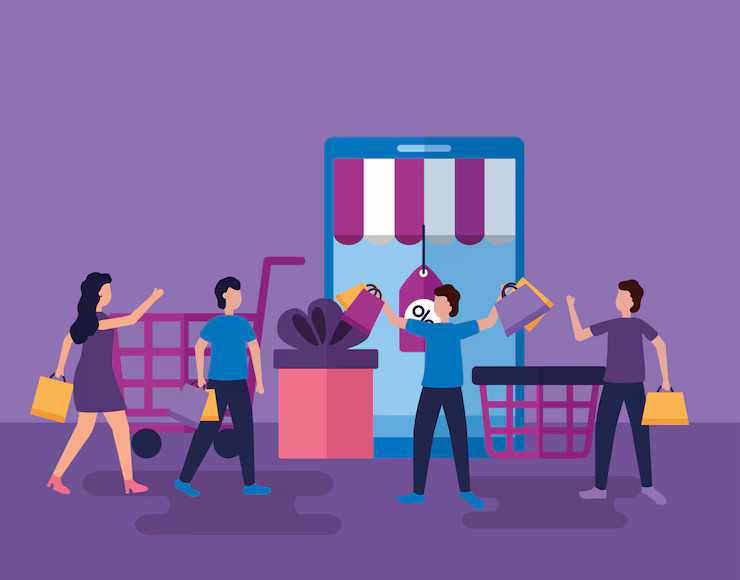Customer loyalty is an important aspect to consider for every business, be it B2B, B2C, or both. Whether you are selling to other businesses or directly to end consumers, repeat purchases will bring you the maximum profit. Acquiring new clients or customers is always more expensive than retaining the existing ones. Therefore, investing in loyalty programs actually brings more profit to your business. However, before you design and execute a loyalty program, it is essential to understand the type of your customer base, their expectations, and the type of rewards that will work for your target market.
The loyalty program approach of a business depends largely on whether it sells to other businesses (B2B) or to the end consumers (B2C). Even if you are selling both to B2B as well as B2C consumers, you need to have different approaches for the two categories. Let us understand some key factors that make a B2B loyalty program different from a B2C loyalty program. Based on these factors, you can create a loyalty strategy that works for your customer base:
Difference Between B2B and B2C Loyalty Program Approaches
B2B and B2C loyalty programs have the same goals, i.e. to retain customers, but there are quite a few differences in the approaches followed by these programs.
1. Target Audiences
The target audience makes the biggest difference in the B2B and B2C business landscape. B2B is targeting other businesses while B2C brands directly interact with the end customers. B2B buyers require more time to make a purchase decision. On the other hand, B2C consumers make quick and simple decisions. With this, it becomes essential to follow different loyalty approaches for B2B and B2C buyers. The same type of rewards or incentives just cannot work for the two categories.
2. Customer Journey
Another important factor that makes B2B and B2C loyalty programs different is the difference between their customer journeys. A B2B buyer’s journey is usually more complex and lengthy compared to a B2C consumer. B2B customers require more information & support and involve multiple decision makers in the process. Talking about B2C consumers, their purchasing behavior depends on their personal preferences and emotional factors.
Therefore, when designing a loyalty program for a B2B audience, your focus should be on offering long-term value, support, and necessary resources throughout their journey. On the other hand, loyalty programs for B2C should be focused on offering value, quality, and good customer experience. One factor that works in both B2B and B2C customer loyalty programs is building an emotional connection. Establishing a strong emotional connection with your customers encourages them to stay loyal for longer periods.
3. Customer Expectations
Understanding customer expectations from your brand is essential to make your loyalty marketing program successful. The expectations of B2B customers are different from that of B2C ones. A B2B buyer expects you to understand their business objectives and provide them with the essential support and resources to help achieve the same. They expect trustworthiness, long-term relationships, and reliability from their partners. On the other hand, a B2C customer expects value and good experience from a brand.
Therefore, to make a B2B loyalty program work, you will have to build trust with your customers. Make them believe that you understand their goals and help them in every possible way to achieve your as well as their business goals. Talking about a B2B loyalty program, your major focus should be on offering personalized experiences and making the purchasing process convenient for them.
4. Customer Retention
Although the end goal of both B2B as well as B2C customer loyalty programs is to retain as many customers as possible, the effort required to improve retention rates varies for both. The relationship of a brand with B2B customers is quite stable as the partnerships are established after signing contracts. Therefore, the chances of customer retention are higher. B2B customers will most likely make repeat purchases if your products or services work well for them. In order to retain B2B customers, you will have to focus on building long-term relationships and delivering value-added services to them.
But B2C customers are not associated with any such contract. They will make repeat purchases only if they are satisfied with the quality and experience that your brand offers. They will easily switch to competitors if they receive better quality, reliability, or customer service elsewhere. Therefore, it becomes extremely important to offer valuable rewards and provide the best customer service to your B2C customers.
5. Types of Loyalty Programs
A loyalty marketing program strategy that works for B2C consumers might not be that efficient for B2B buyers. You can offer rewards based on every purchase to your B2C customers, but this approach wouldn’t be effective for B2Bs. With a points or rewards-based program, earning rewards and redeeming them will be a too long process for B2B buyers as they do not make purchases very frequently.
Therefore, tier-based or membership-based loyalty programs are a better fit for B2B customer bases. Personalized offers and deals work more effectively in B2B loyalty programs. Unlike loyalty points or discount coupons that are offered in B2C programs, value-added incentives, and prizes are better options to go for when designing a B2B loyalty program.
Best B2C Loyalty Program Examples: Loyalty points-based programs, cashback-based programs, discounts for future purchases, tier-based rewards, membership-based programs, etc.
Best B2B Loyalty Program Examples: Tier-based incentive programs, anniversary incentives, large discounts on large purchases, training or certification programs, co-marketing campaigns, VIP experiences, and membership-based programs.
Why Choose RewardPort as Your Loyalty Program Partner?
Keeping in mind the different factors mentioned above, you can decide on the best type of loyalty program for your business. Designing and implementing a loyalty program requires proper strategic planning as you have to take multiple factors into account, such as the type of customer base, their expectations, your business goals, and others. Without proper knowledge of the right methodologies and tools to run a successful loyalty program, you might not be able to make the most out of your loyalty strategy. This is why you need a trusted loyalty program partner.
RewardPort, being one of the most reputed loyalty program companies, has years of experience in running B2B as well as B2C retail loyalty programs. The company has already helped various brands design some of the best loyalty programs in India.
With reward options starting from as low as Rs. 10 and an experienced team of marketing professionals, RewardPort can help you design the perfect loyalty program for your business. The marketing team takes into account every detail of your business and your customers’ interests before finalizing the loyalty strategy.
In case of any further queries, you can connect with our experts.
Frequently Asked Questions
What is the best example of a loyalty program?
Some of the best examples of loyalty programs include points-based programs, cashback-based programs, tiered loyalty programs, membership-based loyalty programs, training and certification-based programs, travel-incentive-based programs, etc.
What are the types of loyalty programs?
Based on the customer base, loyalty programs can be categorized into two types: B2B loyalty programs (for businesses that sell to other businesses) and B2C loyalty programs (for businesses that sell to the end consumers).
What is the purpose of a loyalty program?
The purpose of a loyalty program is to retain customers by improving their experience and satisfaction with a brand.





